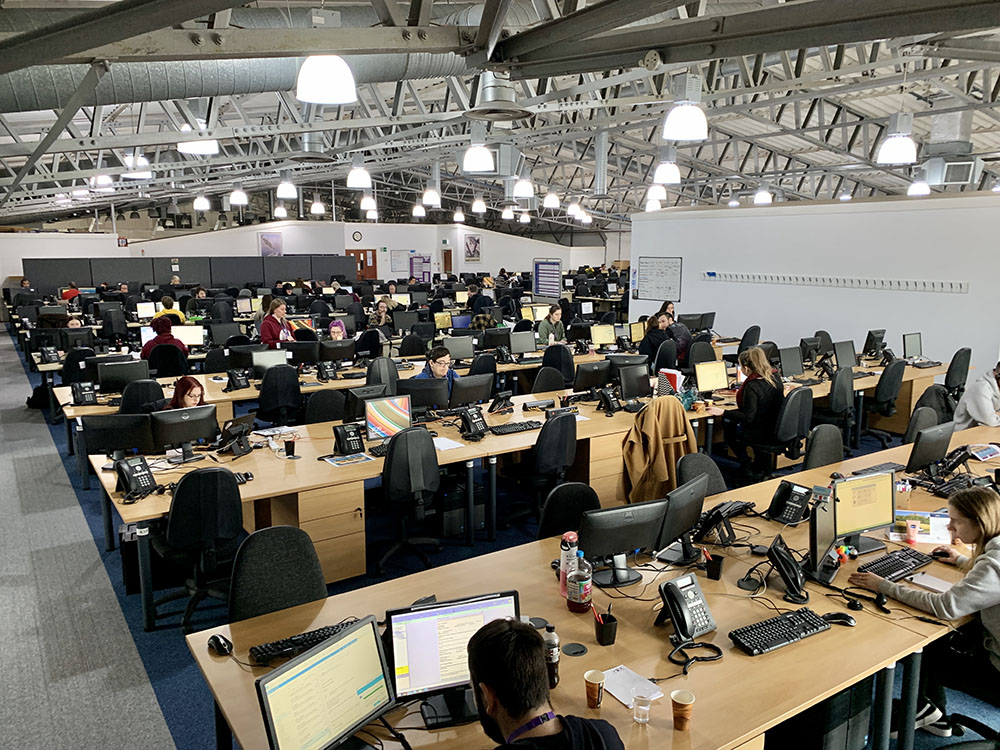In the rapidly evolving landscape of business continuity planning, work area recovery (WAR) is experiencing a notable resurgence, albeit in a transformed and modernised format. Traditionally, work area recovery involved providing large, pre-equipped office spaces where businesses could relocate their employees in the event of a disaster. Today, however, the demand is shifting towards fewer but more dedicated positions, reflecting the changing needs and expectations of companies in a world shaped by new technological advancements and the lessons learned from recent global disruptions.
The Evolution of Work Area Recovery
Historically, work area recovery solutions were designed to cater to mass relocations, ensuring that large teams could seamlessly transition to an alternative worksite if their primary office was compromised. These facilities were equipped with desks, computers, telecommunication equipment, and other essentials to maintain business operations without significant downtime. The model was built on the assumption that proximity and physical presence were paramount to effective recovery.
However, the paradigm has shifted. Modern businesses are increasingly leveraging digital tools and remote working capabilities, which has reduced the necessity for large-scale physical relocations. This evolution is driven by several factors:
- Technological Advancements: The proliferation of cloud computing, virtual private networks (VPNs), and advanced communication platforms has enabled employees to work from virtually anywhere. This flexibility has diminished the reliance on traditional office environments for daily operations.
- Remote Work Culture: The COVID-19 pandemic accelerated the adoption of remote work practices. Companies and employees have become accustomed to working remotely, and many have discovered that productivity can be maintained or even enhanced outside the traditional office setting.
- Cost Efficiency: Maintaining large-scale recovery sites is expensive. By focusing on fewer, more strategic positions, businesses can optimise costs while still ensuring critical functions are supported during a disaster.
The Modern Approach to Work Area Recovery
Today’s work area recovery solutions are more targeted and efficient, emphasising dedicated positions that cater to the specific needs of critical business functions. Here are some key trends shaping this new approach:
- Dedicated Recovery Positions: Instead of vast office spaces, companies are now seeking smaller, dedicated areas tailored to essential teams. These positions are equipped with the necessary tools and infrastructure to support key personnel who are vital to maintaining operations during a crisis.
- Hybrid Models: Businesses are adopting hybrid recovery models that combine physical workspaces with robust remote work capabilities. This approach allows flexibility, enabling companies to scale their recovery efforts based on the nature and severity of the disruption.
- Enhanced Technological Infrastructure: Modern work area recovery sites are equipped with advanced technology, including high-speed internet, secure VPN access, and state-of-the-art communication tools. These facilities ensure that critical employees can perform their duties without interruption, even if they are away from the main office.
- Geographic Distribution: To mitigate risks associated with regional disasters, companies are diversifying their recovery sites across multiple locations. This geographic distribution ensures that even if one area is affected, operations can continue from another site.
The Office as a Safe Haven in Disasters
Despite the rise of remote work and technological advancements, the physical office still holds significant importance in disaster scenarios. Here’s why the office is often the place to be during a crisis:
- Controlled Environment: Offices are equipped with reliable infrastructure, including power backup systems, secure networks, and controlled access. This controlled environment is crucial during disasters when external resources may be compromised.
- Centralised Resources: Offices house critical resources, such as servers, data storage, and specialised equipment that cannot be easily replicated in a home setting. Having these resources in a centralised location ensures quick access and better management during emergencies.
- Collaboration and Communication: In high-stress situations, face-to-face interaction can significantly enhance communication and collaboration. The office environment fosters real-time problem-solving and decision-making, which is vital for effective disaster management.
- Security and Compliance: Certain industries, such as finance and healthcare, have stringent security and compliance requirements. Offices are designed to meet these standards, providing a secure environment for handling sensitive information and ensuring regulatory compliance even during disruptions.
The Role of Business Continuity Planning
The resurgence and evolution of work area recovery are closely tied to broader business continuity planning (BCP) strategies. Effective BCP involves comprehensive risk assessments, identifying critical business functions, and developing detailed recovery plans that encompass both physical and digital environments.
- Risk Assessment and Mitigation: Companies must conduct thorough risk assessments to identify potential threats and vulnerabilities. This includes evaluating natural disasters, cyberattacks, and other disruptions that could impact operations.
- Critical Function Identification: Not all business functions require immediate recovery. Identifying and prioritising critical functions ensures that resources are allocated efficiently, focusing on areas that are essential for maintaining operations.
- Integrated Recovery Plans: Modern BCP strategies integrate physical and digital recovery plans. This holistic approach ensures that businesses are prepared for a wide range of scenarios, from physical damage to cyber incidents.
- Regular Testing and Updates: Business continuity plans must be regularly tested and updated to reflect changing circumstances. This includes conducting drills, reviewing and updating contact information, and ensuring that all employees are aware of their roles and responsibilities during a disaster.
Work area recovery is making a significant comeback, but in a form that aligns with the modern business environment. The emphasis on fewer but dedicated positions, coupled with hybrid models and advanced technological infrastructure, reflects a strategic shift towards more efficient and resilient recovery solutions. The office, despite the rise of remote work, remains a critical component in disaster scenarios due to its controlled environment, centralised resources, and ability to facilitate real-time collaboration and communication.
As businesses continue to navigate the complexities of the modern world, the integration of advanced work area recovery solutions into comprehensive business continuity planning will be essential. By staying ahead of the curve and adapting to new challenges, companies can ensure they are well-prepared to maintain operations and serve their clients, no matter what disruptions they may face.

